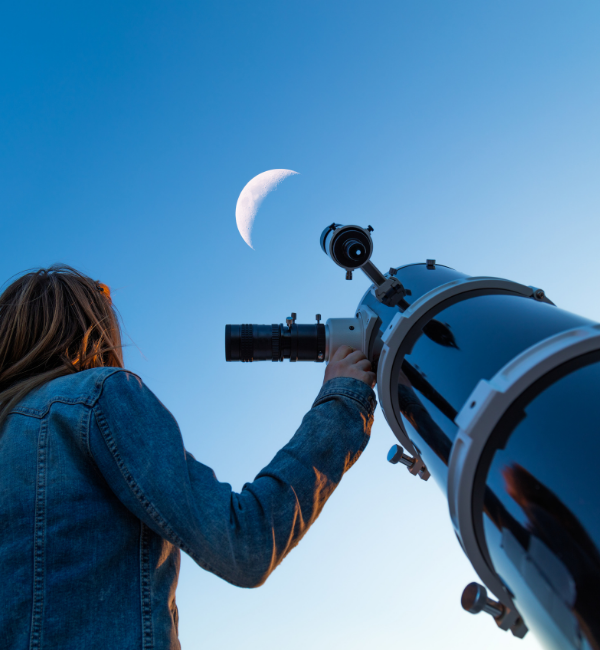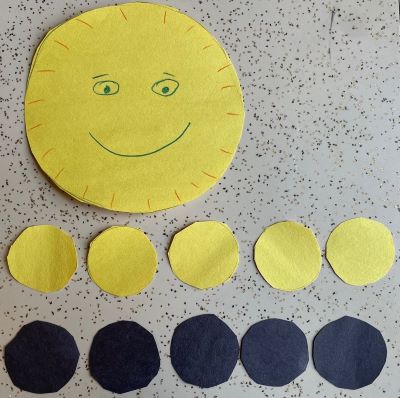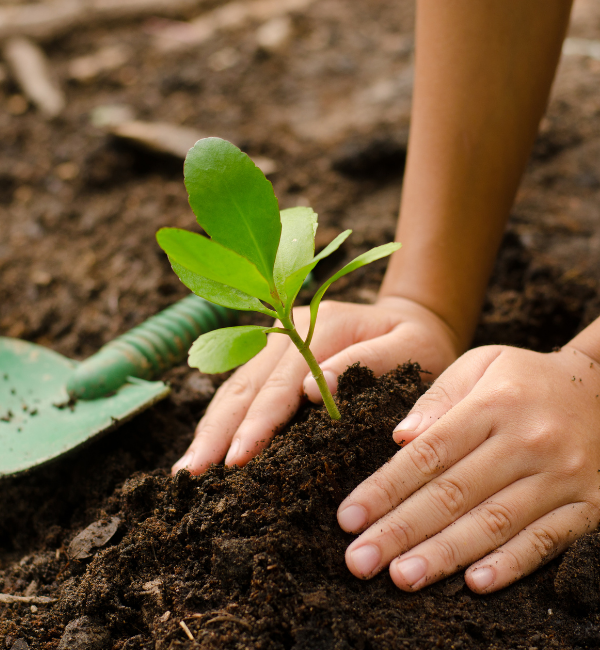STEM Storytime - Solar Eclipse Phases Fold-Up


Get excited for the total solar eclipse!
Learn about solar eclipses by reading a story and making a foldable craft illustrating the phases of a total solar eclipse.
What You Need
Materials
- 1 sheet each of black, yellow and white paper or cardstock (OR blank paper and yellow and black markers or crayons)
- Scissors
- Glue
- Ruler
- Something to write with (e.g. pencil or pen)
- Optional:
- Round objects to trace round, 1 smaller (i.e. a lid or coin, approx. 3-4 cm in diameter) AND 1 larger (i.e. a cup or larger lid, approx. 10-12 cm in diameter)
- Sun or solar eclipse-themed storybook (e.g. Sun! One in a Billion by Stacy McAnulty or Eclipse by Andy Rash)
Safety Notes
Safety is the #1 priority when viewing the solar eclipse. Make sure learners are safely wearing eclipse glasses before looking at the Sun to watch the eclipse. The most straightforward method for safeguarding your eyes is by using eclipse glasses. And remember - regular sunglasses are not appropriate for safely viewing an eclipse.
Young learners may need help from an adult to cut their paper.
What To Do
Introduction
- Read a story about the Sun or solar eclipse.
- Ask learners about their favourite parts of the story.
- Connect the book to the craft. You can do this by asking another question such as "what is a solar eclipse?" or "what do you know about eclipses?".
- Introduce what a solar eclipse is, and that it happens in phases (see Discovery section below).
- Tip: Draw or share a picture of the phases of a solar eclipse.
- Discuss safety.
- Explain that "we're going to make our own pocket solar eclipse, to help us remember the phases of a total solar eclipse!".
- Option: You can choose to include a "body break" before starting the craft, to give learners a chance to get up and move before settling down to the activity. Chose a Sun-themed song or video for them to dance or sing-along to.
Activity
- Fold a sheet of blank white paper in half lengthwise and cut it along the fold, to create two equal strips of paper. You will use one of these strips for the body of your craft.
- Trace and cut out a circle of yellow paper approximately the same diameter as the width of your paper strip (approx. 10 cm). If using blank paper, colour it yellow. Decorate it like the Sun, add a face if you'd like and cut it in half to create two semi-circles.
- Trace and cut out 5 smaller circles each of yellow and black paper, to represent the Sun and the Moon.

- Take the long strip of paper and mark 6 equal sections/boxes. You should have what looks like 6 panels in a comic strip. Position the paper vertically.
- Write "Solar Eclipse" in the top panel.
- Glue the yellow and black circles in each section to show the progression of a solar eclipse, in 5 phases. The phases should be labelled:
- First Contact
- Second Contact
- Totality
- Third Contact
- Fourth Contact
- Progression of a solar eclipse: The black circle slightly overlaps the right edge of the yellow circle, then overlaps most of the yellow circle on the right, then covers it completely, then overlaps most of the yellow circle on the left, then slightly overlaps the left edge of the yellow circle.
- Fold the paper back and forth along the lines of each section, like an accordion.
- Take your Sun circle halves, and tape or glue the top half of the Sun to the top edge of the page, and the lower half of the Sun to the bottom edge of the page. Now, when you fold up the eclipse chart, the semi-circles will join to make a Sun, which you can unfold to see your eclipse phases chart.
Discovery
A solar eclipse occurs when the Moon passes between Earth and the Sun, blocking the view of the Sun from a small part of the Earth, causing a shadow to move across the Earth. A total solar eclipse occurs when the Moon completely covers the Sun's bright face. If you are one of the lucky people to witness a total solar eclipse, the Moon will black out the entire Sun, leaving a glowing ring of light for a few spectacular minutes.
At the start of the eclipse, the Moon will pass in front of the Sun and block a tiny section of the face of the Sun. The first contact is first only visible through a telescope before you can finally see it with the unaided eye. You MUST use eclipse glasses when looking at the Sun! During the next phase, the Moon gradually covers more and more of the Sun's light. As the partial phase progresses, a dark shadow will grow over the Sun's face. When the Moon completely blocks the Sun, this is called "totality". During totality, the Sun is completely blocked and it might look like nighttime outside. You may see bright streams of light around the circle of the Sun and Moon. As the Moon begins to move away from the Sun, the crescent shape of the sun will start to grow and brighten. As the Moon continues to move away from the Sun, the bright crescent of the Sun will grow larger and larger. At the end of the eclipse, none of the Sun will be covered by the Moon's shadow. When the Sun's face is completely free of any dark shapes from the Moon, the eclipse is over.
A total solar eclipse - when the Moon passes between the Sun and Earth, completely blocking out the Sun - is a rare occurrence. While a total solar eclipse occurs once in approximately 18 months, it is rare to be in the path of totality. Meaning, it is rare to be in a location where the Sun is completely blocked by the Moon.
For a simpler version of the activity, learners can skip cutting out the circles and instead draw the 5 eclipse phases on paper using yellow and black drawing tools like markers or crayons.
For additional information about the Sun, Moon and Eclipse:
YouTube Video - Solar Eclipse Foldable Craft Tutorial by Wonder at the World
What's Happening?
A solar eclipse occurs when the Moon passes between Earth and the Sun, blocking the view of the Sun from a small part of the Earth, causing a shadow to move across the Earth. A total solar eclipse occurs when the Moon completely covers the Sun's bright face. If you are one of the lucky people to witness a total solar eclipse, the Moon will black out the entire Sun, leaving a glowing ring of light for a few spectacular minutes.
At the start of the eclipse, the Moon will pass in front of the Sun and block a tiny section of the face of the Sun. The first contact is first only visible through a telescope before you can finally see it with the unaided eye. You MUST use eclipse glasses when looking at the Sun! During the next phase, the Moon gradually covers more and more of the Sun's light. As the partial phase progresses, a dark shadow will grow over the Sun's face. When the Moon completely blocks the Sun, this is called "totality". During totality, the Sun is completely blocked and it might look like nighttime outside. You may see bright streams of light around the circle of the Sun and Moon. As the Moon begins to move away from the Sun, the crescent shape of the sun will start to grow and brighten. As the Moon continues to move away from the Sun, the bright crescent of the Sun will grow larger and larger. At the end of the eclipse, none of the Sun will be covered by the Moon's shadow. When the Sun's face is completely free of any dark shapes from the Moon, the eclipse is over.
Why Does it Matter?
A total solar eclipse - when the Moon passes between the Sun and Earth, completely blocking out the Sun - is a rare occurrence. While a total solar eclipse occurs once in approximately 18 months, it is rare to be in the path of totality. Meaning, it is rare to be in a location where the Sun is completely blocked by the Moon.
Investigate Further
For a simpler version of the activity, learners can skip cutting out the circles and instead draw the 5 eclipse phases on paper using yellow and black drawing tools like markers or crayons.
For additional information about the Sun, Moon and Eclipse:
Resources
YouTube Video - Solar Eclipse Foldable Craft Tutorial by Wonder at the World
